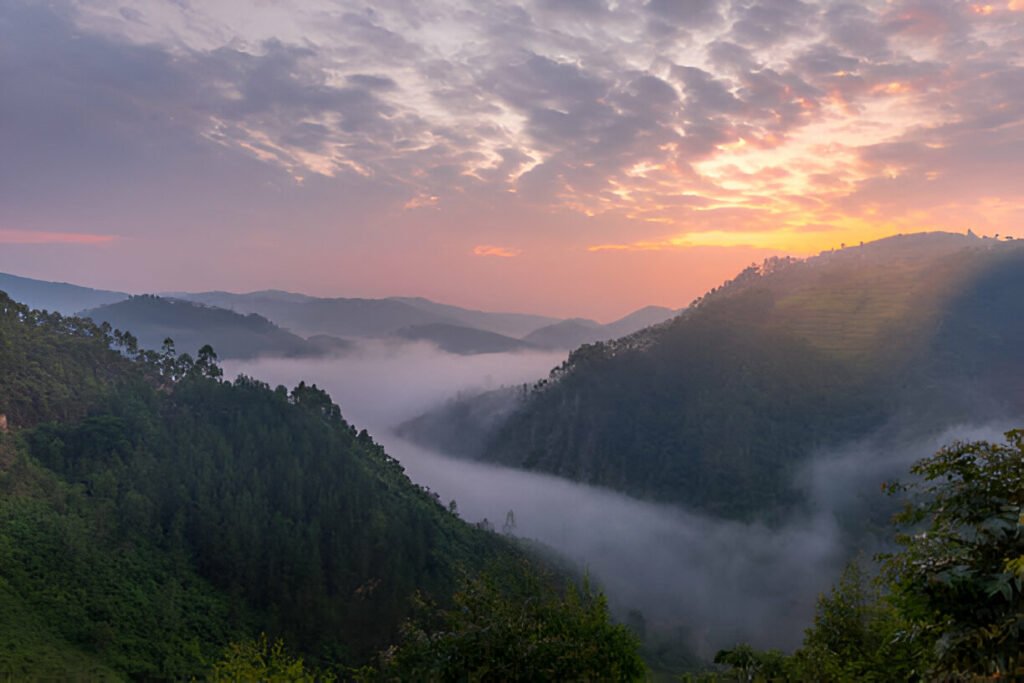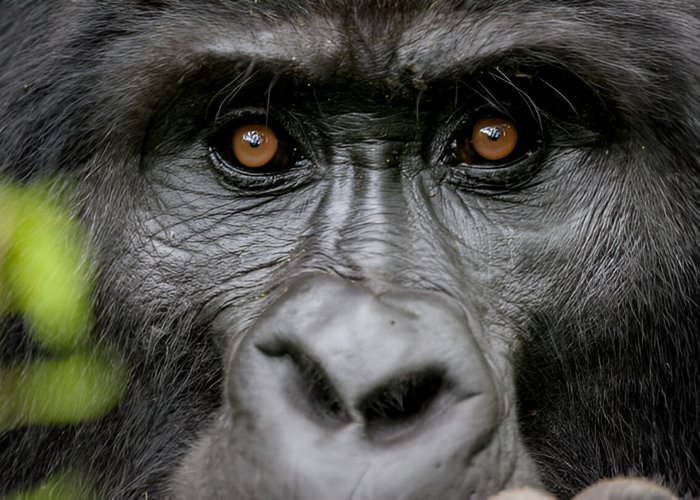
Uganda, often referred to as the “Pearl of Africa,” is renowned for its stunning landscapes, rich cultural heritage, and diverse wildlife.
Among its most famous residents are the mountain gorillas that inhabit the misty forests of the Bwindi Impenetrable National Park and the Mgahinga Gorilla National Park.
These majestic creatures have fascinated scientists, conservationists, and tourists alike.
Here Are 10 Surprising Facts About Uganda’s Mountain Gorillas That You Probably Didn?t Know.
1. Unique Nose Prints for Identification

Just like human fingerprints, each mountain gorilla has a unique nose print. Researchers and conservationists use these distinct nose prints to identify individual gorillas.
This non-invasive method of identification helps in tracking the movements and health of these primates without disturbing their natural behavior.
2. Complex Social Structures

Mountain gorillas live in family groups led by a dominant male known as a silverback. These groups can range from a few individuals to over 30 members.
The silverback plays a crucial role in protecting the group, making decisions, and mediating conflicts. The social bonds within a gorilla family are strong, and grooming is a common activity that helps maintain these relationships.
3. Gentle Giants with a Peaceful Nature

Despite their formidable size and strength, mountain gorillas are known for their gentle and peaceful nature. They are generally shy and prefer to avoid conflict.
Aggression is rare and usually occurs only when they feel threatened or need to protect their group. This gentle demeanor makes gorilla trekking a safe and awe-inspiring experience for visitors.
4. Remarkable Intelligence

Mountain gorillas exhibit remarkable intelligence. They have been observed using tools, such as sticks, to gauge the depth of water before crossing.
They also display problem-solving skills and can learn from their experiences. Their communication methods are sophisticated, including a range of vocalizations, body postures, and facial expressions.
5. Conservation Success Story

Mountain gorillas are one of the few species whose population is increasing, thanks to dedicated conservation efforts. In the past, their numbers had dwindled due to habitat loss, poaching, and disease.
However, through international cooperation, anti-poaching measures, and habitat preservation, their population has been steadily rising.
As of the latest estimates, there are over 1,000 mountain gorillas in the wild.
6. Special Diet and Feeding Habits

Mountain gorillas are primarily herbivores, and their diet consists mainly of leaves, stems, and bamboo shoots. They can consume up to 40 pounds of vegetation daily.
Occasionally, they eat fruits, flowers, and small invertebrates. Their feeding habits play a crucial role in the ecosystem, as they help in seed dispersal and maintaining the health of the forest.
7. Limited Habitat Range

Unlike many other animal species, mountain gorillas have a very limited habitat range. They are found only in the Virunga Mountain range, which spans Uganda, Rwanda, and the Democratic Republic of Congo, and the Bwindi Impenetrable Forest in Uganda.
This restricted range makes them particularly vulnerable to habitat destruction and emphasizes the importance of conservation efforts in these regions.
8. Long Gestation Period and Slow Reproduction

Female mountain gorillas have a long gestation period of about 8.5 months, similar to humans. They typically give birth to one infant every four to six years.
This slow reproductive rate means that population recovery can be slow, making every individual critical for the survival of the species.
Infants are dependent on their mothers for several years, during which they learn essential survival skills.
9. Vocal Communication

Mountain gorillas have a rich repertoire of vocalizations used for communication within the group. These sounds range from grunts and barks to roars and screams, each serving a specific purpose.
For instance, a series of grunts may indicate contentment, while loud roars are used to assert dominance or warn of danger.
Understanding these vocalizations helps researchers monitor their behavior and well-being.
10. Tourism?s Role in Conservation

Gorilla tourism is a significant contributor to the conservation of mountain gorillas. The revenue generated from gorilla trekking permits and related tourism activities funds conservation programs, anti-poaching patrols, and community development projects.
By participating in responsible tourism, visitors play a direct role in the protection and preservation of these magnificent creatures.
Conclusion
Uganda’s mountain gorillas are truly extraordinary animals that continue to captivate the world with their beauty and resilience.
These ten surprising facts highlight not only their unique characteristics but also the ongoing efforts to ensure their survival.
By supporting conservation initiatives and promoting sustainable tourism, we can help secure a future for these gentle giants and preserve the natural wonders of Uganda for generations to come.
Additional Information
Conservation Efforts
Various organizations and governments have worked tirelessly to protect mountain gorillas. The Uganda Wildlife Authority (UWA), in collaboration with international bodies like the World Wide Fund for Nature (WWF) and the International Gorilla Conservation Programme (IGCP), has implemented several measures to safeguard these primates.
Anti-poaching patrols, community education, and the establishment of protected areas are just a few examples of the steps taken to ensure the survival of mountain gorillas.
Gorilla Trekking Experience
For those interested in experiencing the magic of seeing mountain gorillas up close, Uganda offers exceptional gorilla trekking opportunities.
Trekkers are guided by experienced rangers through the dense forests to observe gorillas in their natural habitat.
This once-in-a-lifetime experience not only provides unforgettable memories but also directly contributes to conservation efforts.
The Role of Local Communities
Local communities play a vital role in the conservation of mountain gorillas. Initiatives that involve communities in tourism and conservation activities have proven successful.
By providing alternative livelihoods, such as employment in the tourism sector and participation in conservation projects, locals are incentivized to protect gorillas and their habitats.
Challenges and Future Prospects
Despite the successes in conservation, mountain gorillas still face several challenges. Habitat loss due to agriculture, human encroachment, and political instability in the region are ongoing threats.
Continued vigilance and international support are crucial to address these challenges and ensure the long-term survival of mountain gorillas.
Final Thoughts
Mountain gorillas are not just an emblem of Uganda’s rich biodiversity but also a testament to the power of conservation and the importance of sustainable practices. The continued survival of these magnificent creatures relies on the collective efforts of governments, conservationists, local communities, and tourists.
By spreading awareness and supporting conservation initiatives, we can all play a part in preserving the natural heritage of Uganda and ensuring that future generations can marvel at the splendor of mountain gorillas in the wild.


